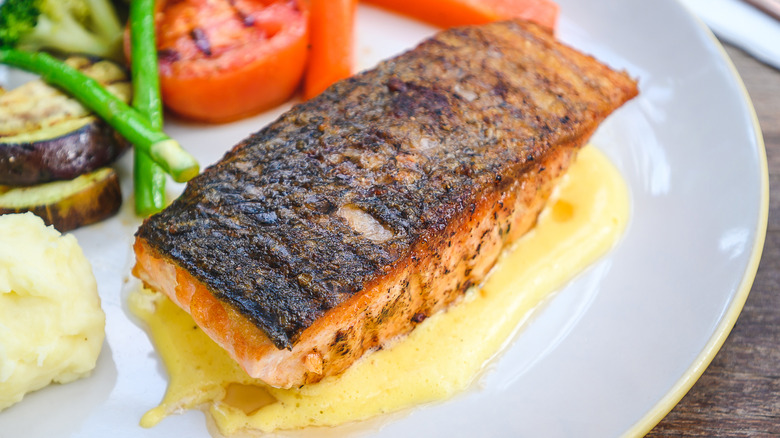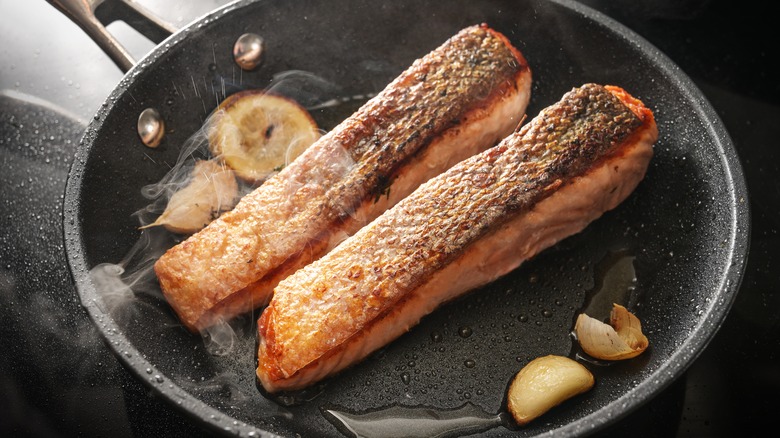The Foolproof Pan Searing Method For The Crispiest Fish Skin
Pan searing fish is a culinary technique that can take a minute to master. After all, fish skin is temperamental: It can stick to the pan and peel off in unseemly patches, or turn out slimy and slippery like the fish hasn't been seared at all. It's a skill that is both simple and intimidating, but there's a foolproof way for you to achieve restaurant-quality fish with perfectly crispy skin. With the right control of temperature and the necessary prep work prior to cooking, you can have a golden crust on your fish every single time. The most important aspect is in modulating your temperature: You want your pan to be hot but also not scorching, lest you want a burnt fillet.
The top thing to keep in mind is to get your nonstick or stainless steel pan hot enough for the initial sear. But you also don't want to make a simple temperature mistake and ruin your fish — you want it to be browned sufficiently, but not enough for it to be overcooked and dry on the inside. Thus, you need to watch out for visual cues in your pan to see when it's time to flip or lower the heat.
Crispy fish skin is all about timing
Before you heat the pan, remember to always dry your fish to the best of your ability. This should ideally happen long before you cook — dab your fish skin dry and let it sit on a wire rack for about an hour at room temperature. After the fish is dry enough, you can heat your pan with a few tablespoons of oil, waiting until the oil smokes. This is your cue to drop the fish gently, skin side down, into the hot pan. This first sear should take you anywhere from 30 to 60 seconds, and then you could lower the heat to medium-high.
Don't try and flip the fish now — it will most likely still stick to the pan, resisting any coaxing with your spatula. Wait around 3 to 4 minutes for the fish to cook, and the skin will curl so that it gently loosens up from the pan. This occurs when all of the moisture has evaporated from the fish, leaving it in direct contact with the oil to crisp up. Once there's no resistance, you can easily flip over the fillet — be sure to be delicate — and finish off that last bit of cooking (to about 75 percent doneness) for a couple of minutes. Add hydration and fat back to the fillet by throwing in a bit of butter and some aromatics like garlic or dill.

